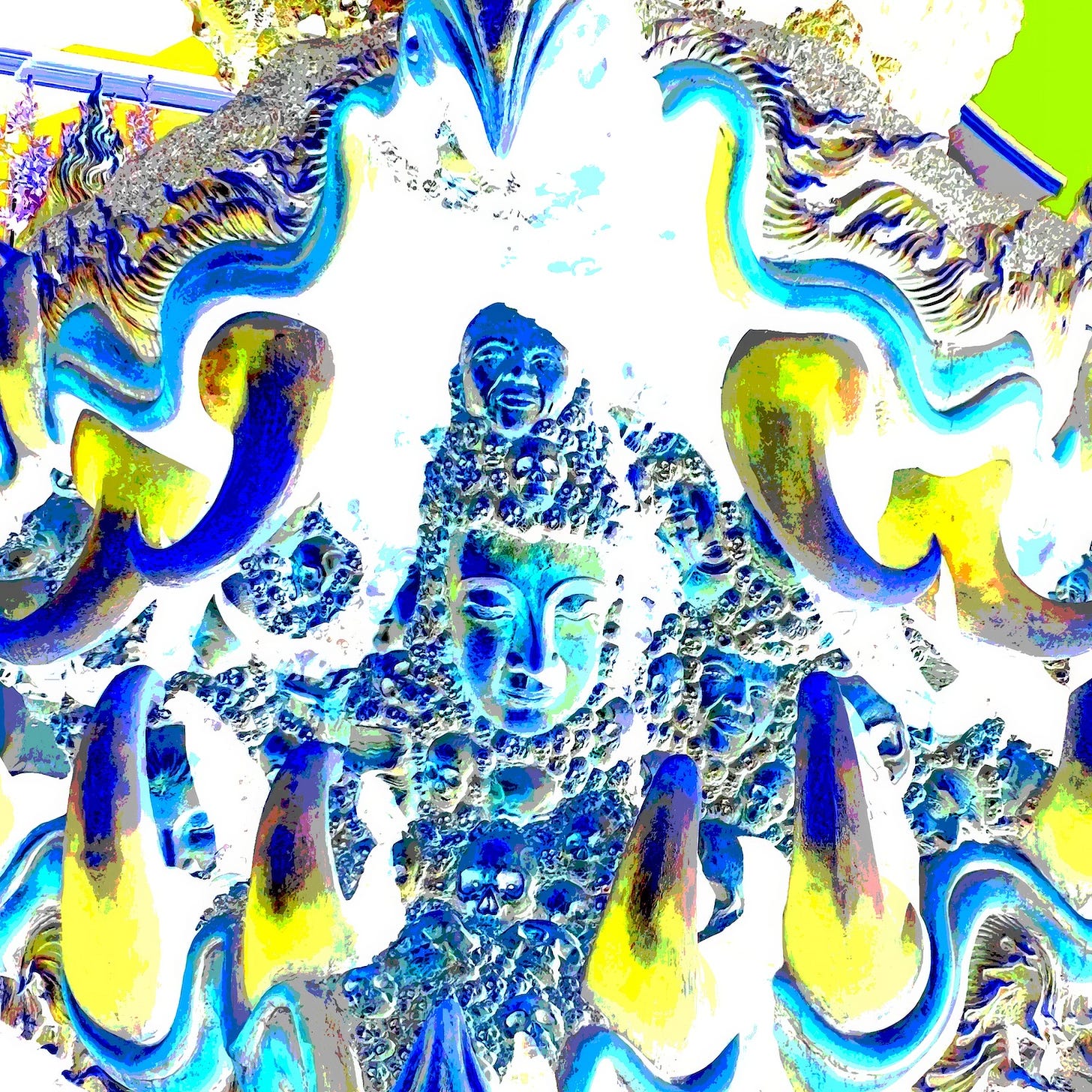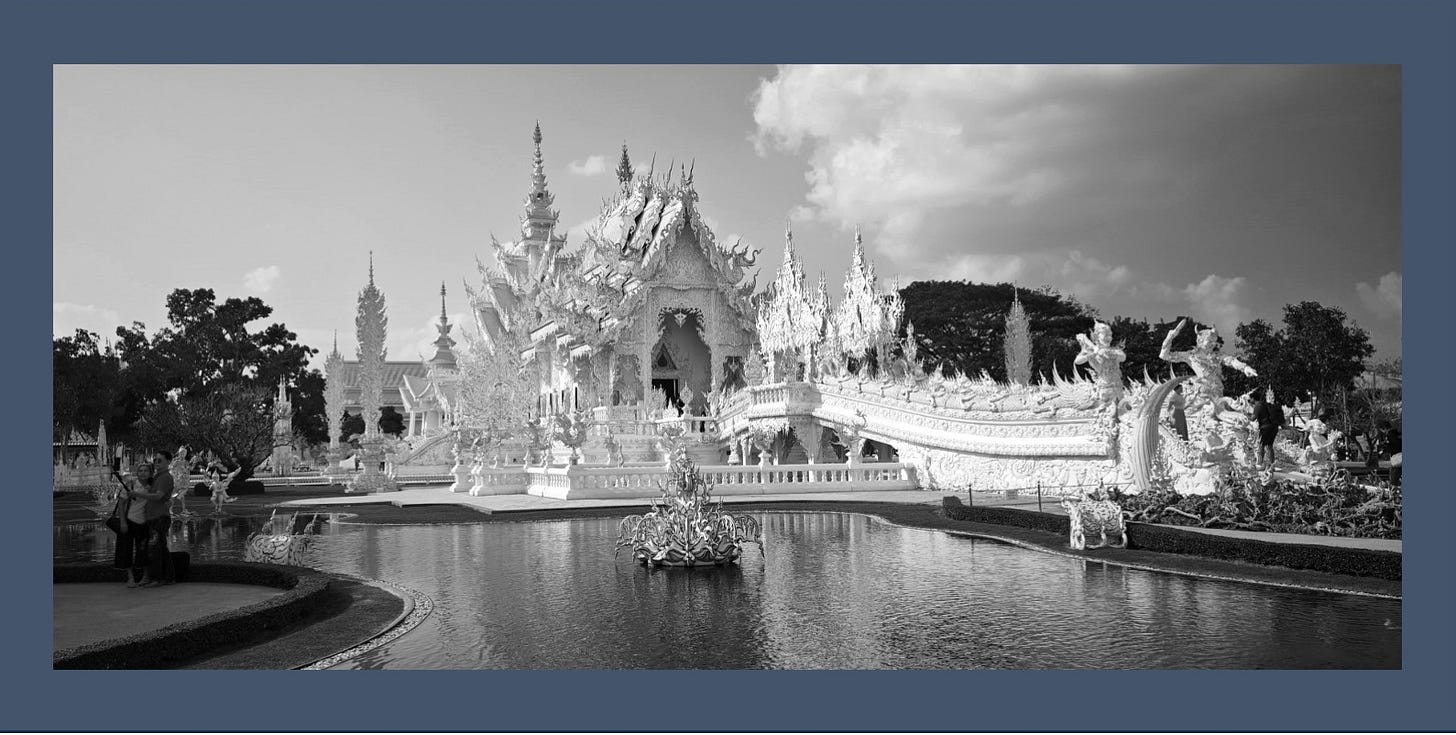I. Whispers and wonders: A temple spectrum
Part 1 of an international solo on ”Lanna“ by Lim Siang Jin. This online exhibition on contemporary photography, comprising 20 parts, is from May 6 to June 5, 2025
LANNA’S Buddhist temples reflect different spiritual approaches. Fourteenth-century Wat Umong encourages quiet introspection with its underground tunnels and a moss-covered chedi, embodying the forest monk tradition. In contrast, the Blue Temple (Wat Rong Suea Ten), completed in 2016, draws visitors with its vivid colours and elaborate design, blending Buddhist themes with modern artistry. Both temples express devotion in distinct ways—one through simplicity, the other through striking visuals—showing that spiritual connection can take many forms.
Wat Umong’s silent teachings
WAT UMONG, which follows the forest monk tradition, a branch of Theravāda Buddhism, is near the gallery of my host in Chiang Mai, renowned artist Wattana Wattanapun. Focused on quiet reflection rather than ornamentation, its tunnels were designed for walking meditation. A former student of Buddhism, Wattana was eager to show me this place, noting that it stands apart from other temples in the city. The temple remains free from the mass tourist crowds and continues to be a refuge for monks and those seeking solitude. While many temples emphasise merit-making, Wat Umong encourages inward contemplation, where nature and silence become integral to the practice.

Reloaded devotion: The Blue Temple
WAT RONG SUEA TEN, the Blue Temple, a short walk from my hotel in Chiang Rai, blends Buddhist symbolism with contemporary design. Completed in 2016 by Phuttha Kabkaew—a student of Chalermchai Kositpipat, the visionary behind the White Temple—this striking structure stands out for its deep blue hues, golden accents, and intricate murals. The temple’s bold aesthetic reinterprets tradition, using colour and form to express Buddhist teachings on impermanence and liberation. Beyond its striking visuals, it raises questions about how spirituality adapts to changing artistic expressions while maintaining its core purpose. At the entrance, I snapped a shot of a gigantic and fierce naga that symbolises mortality; inside its mouth, a golden Buddha that represents transcendence. I decided to soften the colours to reflect the softer side of the temple I felt.

Beyond convention: Temples as art
WAT RONG KHUN (White Temple, Chiang Rai), Wat Rong Suea Ten, and Wat Sri Suphan (Silver Temple, Chiang Mai) reshape Buddhist architecture into artforms while maintaining spiritual significance. Wat Rong Khun’s white structure symbolises purity, the Blue Temple’s deep hues blend tradition with modern design, and Wat Sri Suphan’s silver craftsmanship reflects local artistry. These temples move beyond traditional forms, demonstrating how religious spaces can evolve with contemporary influences. Some see this as “engaged Buddhism”—a practice that adapts to changing times rather than remaining static. They are not just places of worship but artistic expressions of faith and cultural transformation.

For more information, click on links: Stephen Menon, O Art Space Gallery, Lim Siang Jin and his art, here and here. For a detailed acknowledgment, click here



